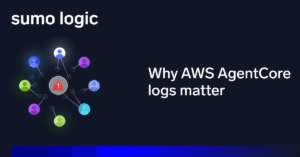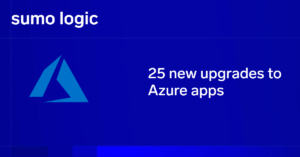
Not all log management and log analysis tools are created equal.
With organizations like yours generating large amounts of log data, understanding how to manage, analyze, and secure these log files is key for maintaining system performance, meeting compliance requirements, detecting performance issues, and responding to incidents faster.
And modern log management solutions which include visual dashboards to immediately analyze data, automated alerting, and built-in log analytics, are your best bet for maintaining secure operations.
Here’s what to look for when searching for the best log management tool for your team to be successful.
What is log management?
Log management is the continuous process of collecting, analyzing and retaining log data or log files over time. With log management, DevOps, site reliability engineering, and security teams can monitor application performance, detect performance issues, and identify security threats.
Once collected, log data from various applications and infrastructure can be analyzed and used to gain insight into business, security, and operational performance.
Your DevSecOps teams may access data from on-premises, cloud and hybrid settings with the log management processes below:
- Instrument and collect: The first step in log management is log aggregation, which is pulling logs from various log sources into one place. Data can be pulled from syslog, event logs, application logs, or cloud infrastructure. Tools that offer schema-on-read offer more flexibility, allowing teams to parse log files as needed without upfront formatting, which streamlines the log management process. Imagine how annoying it would be to go to every server, application and network device individually!
- Centralize and index: Next, your logs need to be in one central location and indexed for visibility and ease of use, also known as log collection. Centralized logs guarantee that you never have to manually “grep” (a command-line tool that searches for matching text) a log file of interest from various systems across several servers. Similar to Google, indexing enables DevSecOps teams to easily search for any term across all their logs, or in other words, perform log queries.
- Search and evaluate: Now comes the fun part, well, fun to some folks—searching and using the information in your logs. Use search or native machine learning to identify outliers, spot trends, or compare time periods.
- Monitor and alert: Continuous log monitoring enables teams to set alerts for key events, anomalies, and performance issues. With advanced tools like Sumo Logic, users benefit from dynamic thresholds, ML-powered insights and analytics.
- Log report and dashboard: The last puzzle piece is ongoing reporting. It’s important to have sophisticated software that automates the reporting of event log information. These visualizations offer insight into resource allocation, security posture, regulatory compliance, and more. Make sure the log management solution you choose has features like role-based access control (RBAC) to help ensure the right teams have secure access to data.
A log management system lets you collect log file data in one location and view it as a whole rather than as individual components. As a result, you can analyze the gathered log data and metrics to recognize issues and patterns, and create a clear visual representation of how your systems function at any given time.
Why use a log management tool?
Log management tools continuously collect, analyze, and retain log files generated across your infrastructure. This log event data can then offer dynamic performance monitoring and real-time alerting to give your organization more visibility and understanding of their security posture and system performance.
With logs being produced at every layer, from applications and databases to servers and cloud services, having a centralized solution is crucial for detecting threats and meeting compliance requirements.
Improve reliability and performance with unified log management
Raw log files can tell you what happened, but centralized log management helps you understand why. Viewing all logs across your stack in one place allows you to correlate events, track down performance issues, and detect anomalies faster. This is a log management best practice that improves application performance, user experience, and uptime.
Managing logs centrally simplifies the log management process and ensures no critical log goes unnoticed.
Simplify security and compliance with centralized log management
With a dedicated log management tool, your IT teams have all the information they need to decide what is worth examining when a threat is detected. These tools can assist you in stopping breaches, identifying indicators of compromise (IOCs), and transforming your data into useful threat information with a unified log management system.
Integrate easily with cloud services
Cloud-native architecture demands scalable log management. That’s why leading tools offer one-click integrations with AWS, Azure, and GCP. These integrations make it simple to ingest and analyze application logs, network logs, and other log sources, helping you maintain full visibility across cloud environments.
Provide multi-cloud support with multiple apps and native integrations
You can get out-of-the-box visibility into the technologies that power your applications with real-time visibility into AWS, Azure and Google Cloud Platform (GCP) cloud apps and infrastructure.
Why Sumo Logic stands out among log management tools
Not all platforms are created equal, but Sumo Logic stands out as the trusted option for unified log collection, log monitoring, and log analytics in one centralized location.
With advanced features like pattern recognition, anomaly detection, outlier detection, and predictive analytics, Sumo Logic helps DevSecOps teams proactively manage logging and detect threats, all with integrated threat intelligence. And you can’t forget about Sumo Logic’s simple dashboards and data visualizations, which make the performance of every stack component more accessible, helping you analyze and translate audit logs.
For machine data insights, Sumo Logic’s platform features built-in pattern identification, anomaly detection, outlier detection and predictive analytics. With Sumo Logic, our customers ensure application reliability, modern threat protection, and gain infrastructure insights.
Why don’t you try it out for yourself? Sign up for a 30-day free trial.




